1
Oh so bittersweet
The teacher life was an interesting experience while it lasted, but it was finally time to move on. There were of course elements and particular parts of my teaching experience that I will always love i.e. seeing those light bulb moments on students’ faces, helping eager students progress toward their goals, sharing ideas of personal development & education.
However, it was ultimately the uninspiring environment (unproductive meetings, monotonous non-teaching related tasks, etc.), subpar working conditions (low pay, job instability, regular six-day-weeks, overtime, etc.), and inability to pursue my real passions that steered me clear of continuing on with the English teaching path.
After a little over six and a half years of teaching English in Japan (also the exact amount of time I’ve lived here as of this writing), I made the change into a career I never knew I always wanted.


TL;DR
I went from an unfulfilling nine-to-five work life to doing something I truly love by helping make the web a better place for more than a billion people each month with the coolest 100% remote tech company on the block at Automattic.
2
Post-University Life
Now before I go any further, I think I should probably say that I never really considered teaching English as a career option for myself, and not just teaching English, but teaching it as a second language.
What I was interested in was Japan!
It was always my dream to visit and experience this majestic country and culture in all its glory since I first uncovered its existence as a curious first grader during reading time at my school library.
I pursued the study of its culture, language, literature, and almost everything about Japan all the way up to my university days. Many times along the way, there were numerous opportunities to visit Japan, but they were eventually denied to me due to uncontrollable factors. These events were truly upsetting letdowns for me, but it only made my resolve stronger. I was determined to — someday & somehow — find my way to Japan.
After graduating, I managed to discover online that there were many job opportunities for teaching English.
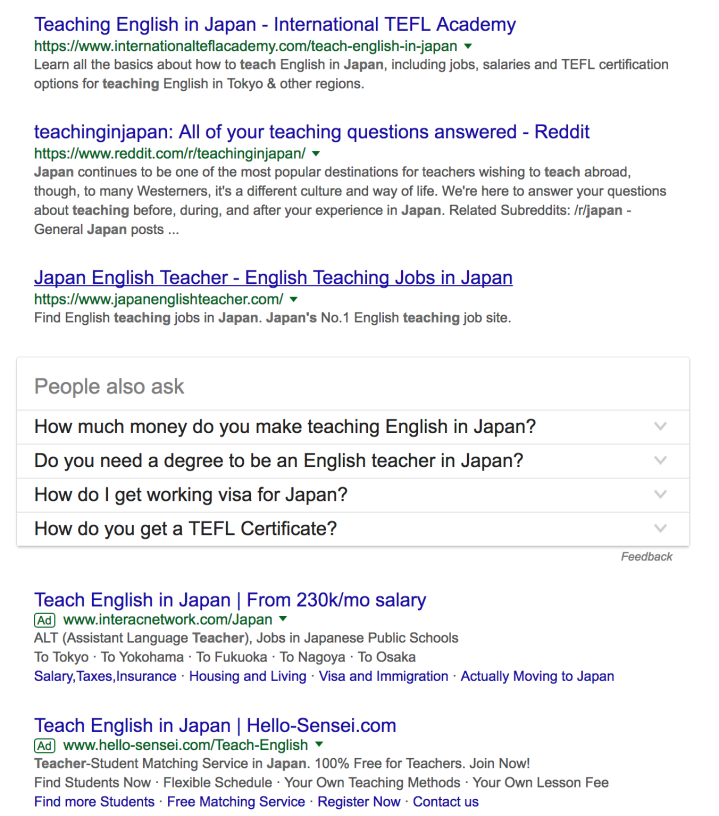
“That’s it!” I thought — that’s how I’ll get to Japan. The job description read: Assistant Language Teacher (ALT). A, L, T… hm sounds interesting. For many recent college graduates who have their prospects on working in Japan, this position would probably be the first they hear of in regards to getting a job, and it’s also a position considered the most easiest to land.
Living in Orange County with a degree in East Asian Cultures and a minor in Japanese, there weren’t exactly many jobs jumping out to me screaming they needed me. Additionally, with my looming student loan payments creeping up from deferment, I really needed a job.
It was harsh times. My part-time gig as a barista wasn’t cutting it, so an ALT position didn’t seem like such a bad idea after all.
The barebones requirements to be an ALT are fairly straightforward: have a bachelor’s degree + come from an English-speaking country. *okay, check and check!* In addition to those, I also got me a TEFL/TESL certification as well to give my qualifications an added edge.
Soon after, I applied to ECC, GABA, Berlitz, and a couple other companies if I remember correctly, but I ended up getting a reply and interview with Interac first. Of all the ALT companies on the web, Interac seemed to be the most established, and although I did read negative reviews of the company, I didn’t think much of it at the time because almost every company and English conversation school had its share of negative reviews.
It didn’t really matter if I went with Interac, ECC, or some other company. I was probably just more excited at the fact that I was finally inching closer to my dream and seeing it become a reality.
I did what I had to do to make it happen: I submitted my application, did a phone screening, and before I knew it I had myself an interview.
The interview wasn’t too bad, and it was everything I expected from a proper interview. All the details of how the interview would be conducted were all outlined in a pre-interview email anyway, so there were no surprises here.
Two weeks after my interview, I received an email in my inbox.

The beginning of a new life.
This job offer marked two very important milestones for me since my graduation, one being that it was my first full-time job offer, and two, it marked the achievement of my life-long dream of going to Japan. I finally did it!
3
Sapporo: My New Home
It wouldn’t be another month and a half until I actually arrived in Japan to start my new job as a fresh ALT.
During this time though, I didn’t receive my placement in Japan just yet. I was honestly really anxious about where I’d get placed. However, I was initially extremely flexible with my location preferences ensuring that it would be the surest way for me to get to Japan. Countryside, city, remote island, it didn’t matter at the time.
I was down for any placement, just so long as Interac got me to Japan. *secretly hoping for the city though*
Lucky for me, I got a placement that would end up being the perfect mix of what I was looking for in a city — Sapporo. Here’s a glimpse of some pics from my IG.
Sapporo has the right amount of bustling urban-ness I need in a city, but is also nowhere near as crowded as Tokyo or Osaka, which makes for a nice balance. You could take a stroll in the city and not feel rushed to walk fast or get out of people’s ways constantly.
Winters, however, are apparently half-year long ordeals which was something that took some adjusting to, but I’ve since grown accustomed to it.
My first apartment was a teeny tiny standard ALT Leopalace apartment. Nothing fancy schmancy, but it was fully furnished which was a nice convenience.
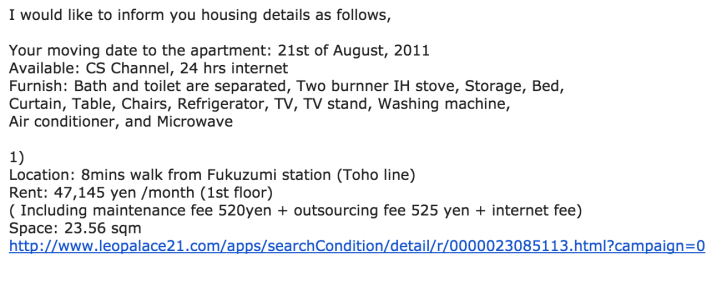

While I wasn’t located directly in the city center (Chuo-ku), I was placed in a rather nice location located right next to Sapporo Dome, the main sports stadium where many concerts and sports events are held.
My relatively short-lived time in this apartment was how shall I put it… beautiful (to say the least).
For those who don’t know where and how I lived prior to getting my very own apartment, you should know that I lived with roommates/coworkers/dormies in various living situations for the past six years.
The latter two years were spent occupying the living room of a rented house with seven coworkers. Yes, seven! Irvine is not cheap. And yes, my “room” was the living room. On the plus side, there was never a dull moment in the house and my rent was only $200 so yeah… I’ll stop here though, as I could write a novella of all the stories that came from living in this crazy house.
Anyways, I was happy to finally have some P-R-I-V-A-C-Y for a change, along with some peace and quiet with my own space to myself.
With an official start date from September 1st, the start of my scheduled week-long ALT training was also the very same day as my arrival in Japan. The ALT life awaits.
4
My ALT Experience
What exactly is an ALT?
Assistant Language Teacher. The bread and butter of Japan’s currently implemented English education system. They are dispatched to elementary, junior high or high schools. An ALT’s most fundamental role is to serve as, well…, an assistant to the main teacher of English in class. The ALT might commonly be asked to prepare speaking, listening and or writing activities.
In addition, they might also have to do pronunciation drills (commonly known as “tape recorder” work) or lead lessons from the textbook. In some rare cases, the Japanese English Teacher (JET) might just hand over their entire class to the ALT and expect them to conduct the whole lesson. Basically, whatever the JET asks, the ALT does.
What were your thoughts while being an ALT?
At first, being an ALT was a little stressful, especially since it was my first time for doing a lot new things at once i.e. moving, living and working in a new country.
The initial training I received really set the tone for what I thought I should be expecting to do as an ALT. It was a week long and for me it definitely felt like a bootcamp. I have very vivid memories of instructors doing various demo lessons with bottomless enthusiasm and energy.
Everything they showed us was by their book and they constantly preached to us that whenever we were in front of the class, it was OUR time—we are the teacher. The Teacher? Quite far from the truth.
There are two sides to being an ALT that I think are worth noting. One, the experience you get while being in Japanese schools and “teaching” students. And two, dealing with all the technicalities of working in a dispatch company.
What are your thoughts now?
In the end, an ALT is just that, an assistant language teacher — emphasis on assistant. The ALT is not the lead teacher. If assistance is needed, you will be there to assist. If no assistance is needed, and by that, I mean the JET doesn’t ask you to prepare anything because they have their own lessons they need to get done, then sadly you’ll have to take a seat.
Depending on how you look at this, you might think it’s so good to relax. But on the other hand, you might also think about how unfulfilling it is to not be doing anything that matters. It’s a misconception they feed you — ALTs are teachers. If we’re teachers, then shouldn’t we be the ones in control? Sorry, we are not. And that’s what any person looking to be an ALT needs to understand before they decide on taking the job.
5
Living On The Poverty line
If you truly plan on living in Japan as an ALT, please, please, PLEASE, think seriously before you do, and do not make the mistake I did by not having at least some sort of Plan B or exit game. The salary and location of where you are located will have a huge impact on the lifestyle you can live.
That Japanese Man Yuta breaks down the salary of an English teacher quite nicely in the video above. He also does a great job of trying to make light of the situation of what could be done with what amount in this video: How Much Does It Cost To Live In Japan?
For a comical, yet frighteningly accurate, take on the stark reality of the various salary bracket levels one might live on in Japan, please visit Ken Seeroi’s post: Tokyo Salaries: All You Need to Know, as this is as comprehensive and grounded as it gets.
230,000 yen per month: If you like cold and dark, then this is the wage for you…
KEN SEEROI, JAPANESERULEOF7.COM
250,000 yen per month: Now you can keep the lights on until bedtime, and perhaps buy a blanket for warmth…
270,000 yen per month: If there were a practical poverty line, at least from a Western perspective, this would be it…
300,000 yen per month: Congratulations, you’ve finally made it off Skid Row…
350,000 yen per month: This is more money than many Japanese people will see in their lifetimes…
400,000 per month: Ah, Lives of the Rich and Famous…
Above 400,000 yen per month: Now you’re entering rarified territory. I’ve made this level of coin briefly, but frankly it wasn’t worth the effort required. Which is to say that I’m a lazy bastard who prefers evenings slamming cans of malt liquor watching sunsets over the Arakawa river to sitting at a desk surrounded by dozing salarymen…
I’ll give it to you straight — my salary while working for Interac was a flat 230,000 yen living in Sapporo. Now, I don’t remember the exact details of how much I paid for everything, but here’s what I needed to factor in for my basic needs:
- rent
- gas
- water
- electricity
- internet
- phone
- transportation
- food
- student loans
- health insurance
- pension insurance
- income tax
- city tax
And all this is also not including going out at least once a week for a drink with colleagues, eating out, or just exploring in general to maintain sanity. If I remember correctly, my take home pay was well below 100,000 yen. And I’m also pretty sure there are some other miscellaneous things I’m forgetting to factor in here as well. But all I can say here is this: The Struggle. Is. Real.
There was a time when I was seriously only living off of peanut butter and protein bars. Yup.

6
#NotAboutThatLife Part One
By this time, I realized that working as an ALT was not a sustainable career choice and I needed to accelerate my plans on making a career change a lot sooner than I thought, because if I didn’t then I’d be in deep waters.
I’m going to fast forward a little bit to the part when somewhere during these turbulent times, I met a very special person who brought new purpose and happiness into my life. Challenged me to become a better version of myself every day. And eventually would become my life partner who I’d travel around the world with. This person helped me through some of my toughest times and even pointed me in the direction that would lead me to realize my career calling.
It was during this time when I realized where I actually wanted to be career-wise. After going through a whole lot of soul-searching and career tests, I knew from this point on that I wanted to break into the IT field.
It was a field that was much more suited toward my personal interests and natural talents. But there was definitely no way I’d land a job in the tech field at that time since I was only getting started. I knew that if I wanted to have any sort of fighting chance, I’d have to do a lot of studying, networking and resume-building beforehand if I wanted to be successful. And that would obviously take some planning and a lot of time.
The priority however was to first GET OUT from the ALT biz (specifically Interac), and find a better job. At this point, a better job was basically any job with a salary higher than the one I currently had, even if it was another teaching job.
The goal was to find a job that would at least get me out of poverty-level living, and would allow me the time, energy, and financial resources needed to focus on starting to make my career change.
I signed up for multiple job boards to get me started with my search. Here are some of the main ones I used:
- https://jobs.gaijinpot.com/
- http://www.etas-net.jp/
- https://www.daijob.com/en/
- https://jobsinjapan.com/
These were all great services, but the one that ultimately helped me out the most was a local service based here in Sapporo, but covers areas also outside of Hokkaido. This service is Hokkaido Insider and is run by Ken Hartmann, a long-standing member of the Hokkaido community — I could not recommend his service enough.
In fact, JapanTimes.co.jp wrote an article about his amazing life story and contributions to the Hokkaido expat community, check it out!
Hokkaido Insider is basically an email subscription service to job listings that you won’t normally find on other job boards. To get a feel for what I mean, here’s a screenshot of my inbox:

Within a month, I received 12 different job listings ranging from part-time to full-time, to even university level positions. This is literally inside scoop material that you would not see on any other public job boards.
Perhaps with a stroke of luck and some vigilant job post watching, I eventually found a direct-hire teaching position as a native English teacher for a private high school.

Getting the position at the school was not hard, and I believe most of it had to do with my prior experience as an ALT. Another factor that I believe played a large part in me getting the role was the fact that Ken directly passed on my resume to the principal and personally recommended me.
I met with the principal at the school a few days later, and what I thought would be a formal interview ended up being just a semi-casual meeting. I was asked a few general questions about myself and then after some more back-and-forth small talk, I was asked when I could start, and that was it. Direct hire position achieved!
For the time being, I was finally set free from the time-consuming mentally-draining soul-crushing minutia that embodies ALT work.
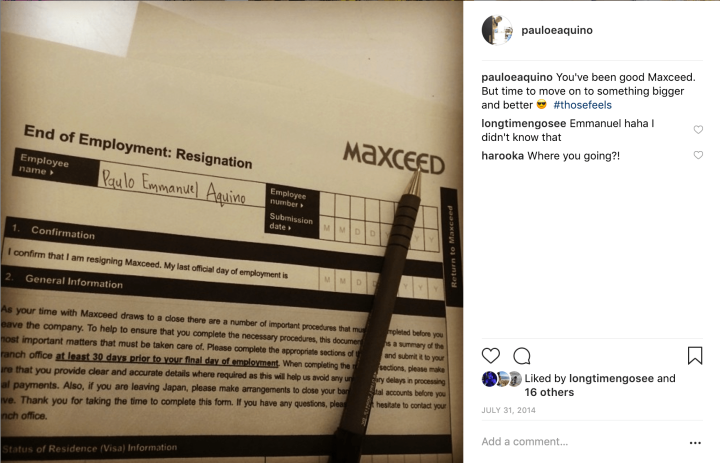
My Interac ALT Timeline (3yrs)
2011 February 02
Submit Online Application
2011 April 28
Phone Screening Request
2011 May
06 – Phone Screening
21 – Interview Seminar
2011 June 02
Offer of Employment
2011 August
15 – Japan Arrival + Training (15th-20th)
21 – Sapporo Arrival
2011 September 01
First day of ALT work
2014 August 15
Last day of ALT work
7
#NotAboutThatLife Part Deux
The move from jumping around and working in various public junior high schools throughout the years as a dispatch ALT, to being directly hired by a private high school as an NET (Native English Teacher) was certainly a significant step up from working at Interac.
The job offered slightly more stability and I was finally being provided a means to live much more reasonably. But I was not completely out from under the bus just yet — my sights were still set on making a career change, so I wasn’t going to get too comfy here.
The work as an NET was nearly the same as an ALT, but the main difference was that I had my own classes and everything was conducted on my own. I had complete control over what I could do with my classes, which was a big thing for me. And also now that I was teaching high school students, I had more opportunities to teach things outside the realm of just English grammar, reading, and speaking — I was now put in charge of teaching writing.
The thing about teaching writing is that in order to effectively engage students in learning in this area, I would have to explore interesting topics that would appeal to them. This certainly led to many delightful discussions. I often challenged students’ views and mindsets with ideas and global issues that I felt weren’t usually touched upon in English classes in Japan: racism/discrimination, LGBT rights, environmental problems, child soldiers, war in Africa.
Some of the media I chose to craft a curriculum around included: Remember the Titans, Zootopia, Moana, Blood Diamond, Hafu: The Mixed-Race Experience in Japan, and perhaps one too many TED clips. We also touched upon personal development and even had a few lessons on personality types with MBTI.
My lessons were bordering very close to what could have been considered university lessons now that I look back on how much critical-thinking and analyzing I made my students do while watching these films.
If I had never mentioned that Zootopia was a direct commentary on the current state of racial affairs in the US, my students most likely would have thought it was just another cute Disney flick. At any rate, exploring ideas like these with my students was something I realized I enjoyed much more than actually teaching English as a second language.
Salary-wise, although not a massive leap from an ALT salary, I was getting 50,000 yen more a month, and quite possibly the best part in addition to my monthly salary was twice in a year (once in the summer and once in winter), there was a bonus salary.

That’s basically two extra full months salary in a year, the exact opposite of what I was getting (or should I say not getting) when I was working as an ALT.
Additionally, unlike working under Interac where I didn’t get subsidized health insurance and had to pay for my own city taxes and pension after I got my salary, the school I worked at took care of all that for me. My net income was a lot more clear now that these things were automatically pulled before I even received my salary, and for me having that convenience was nice. It was always a chore to have to go out of my way to a convenience store to have to pay my city taxes, pension and health insurance separately.
The salary did also increase every year but by a very minuscule sum of 3000 yen, which was better than no raise at all I suppose. And even though I was on a one-year-contract, there was no limit to how long I could work there, or so I was told by the management.
Some schools have a clear 5 year work limit, which is also common among university teaching contracts. Basically, there’s this employment policy in Japan where after 5 years of working at a certain place, the employer is obligated to allow the employee to request for a non-fixed-term contract. While the ideal employer should kindly offer a permanent position to the employee, it’s been more common to see quite the opposite as highlighted in cases like this: ‘Five-year rule’ triggers ‘Tohoku college massacre’ of jobs.

I was not planning on waiting around to be placed on a chopping block.
8
Learn To Code The Hard Way
Since I was coming in during the last half of the summer vacation, there were a couple weeks of downtime at my school before lessons officially began again.
I immediately got started with a search on how I could break into the tech industry. Lots of advice and resources, but where to start…
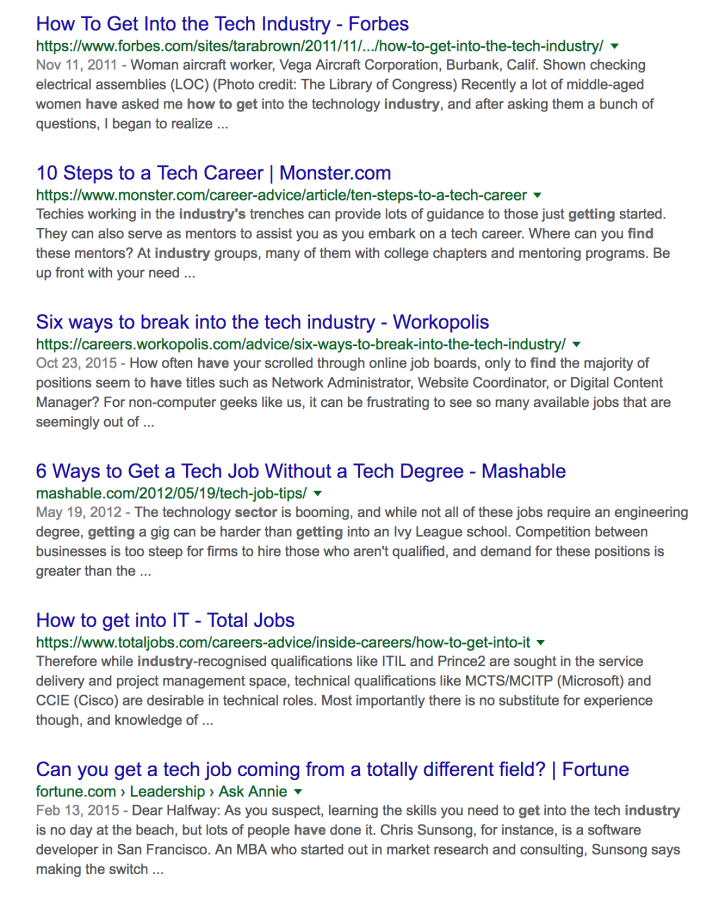
I quickly learned there were so many different avenues to get started and it was totally overwhelming. So I decided to start out with the basics and thought I’d go back to revisiting my HTML & CSS skills first. My first encounter with these markup languages goes back to when I had a Xanga account. Using it’s “Weblog”, I’d often mess around with the HTML formatting when writing posts and I’d always be fascinated with what kind of changes were made when using different tags.
Anyways, I started to get my feet wet by taking some free courses on Codecademy. I took its HTML, CSS, & JavaScript courses, but I didn’t feel like I was making progress toward anything. I think most of it had to do with the fact that everything I was learning was contained on & restricted to the platform. Additionally, there was a lot of “handholding” involved while going through each coding exercise. Eventually, I moved away from the platform to try others.
It’s also worth mentioning that during this time, I wasn’t immediately sure as to which area in the industry I wanted to get into, or rather, which area would suit me best. So, I ended up trying a lot of languages and taking many different courses on various platforms. Some of those platforms that really excelled my learning were the following:
The first programming language I really spent time studying was Python. The book I used for learning it was Learn Python The Hard Way by Zed Shaw. A lot of my fundamental programming knowledge came from this language and book. Other programming languages & frameworks I learned/tried out included:

Some web development frameworks I learned and worked with were:
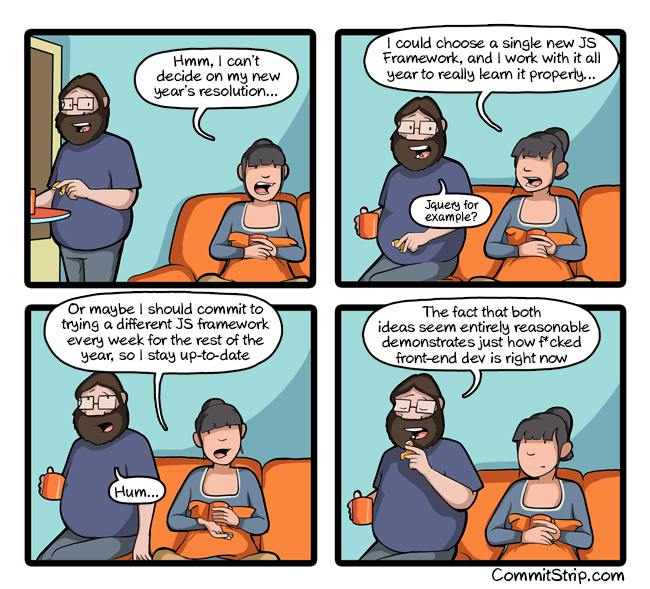
During this time, I also became comfortable using my Mac Terminal, setting up test environments, different CLI tools, and version control tools like Git & GitHub. I even got into web design for a bit, explored the Adobe Suite, and learned the business side of freelancing and entrepreneurship.
I was all over the place for the first couple of years trying to find my niche.
But it was from my newfound knowledge from a freelancing course I took that convinced me that I should start a personal brand, or at least invest in a personal website. It made sense. I was planning on creating an online portfolio anyway, so I decided to finally invest in web hosting and a domain.
I got all setup within a day. I had my hosting. I had my domain. But now what? Where’s my site, and how do I use this? It just so happens from the very same freelancing course, I was also introduced to and taught how to use an open source software that now powers over 30% of all websites on the web — WordPress.

And from that point on, the rest was history…
9
Democratize Publishing Part One
Meanwhile, in other news:
2014 February
Kosato and I got married ♥
2015 January
Had our wedding ♥♥
2016 February
Became parents ♥♥♥
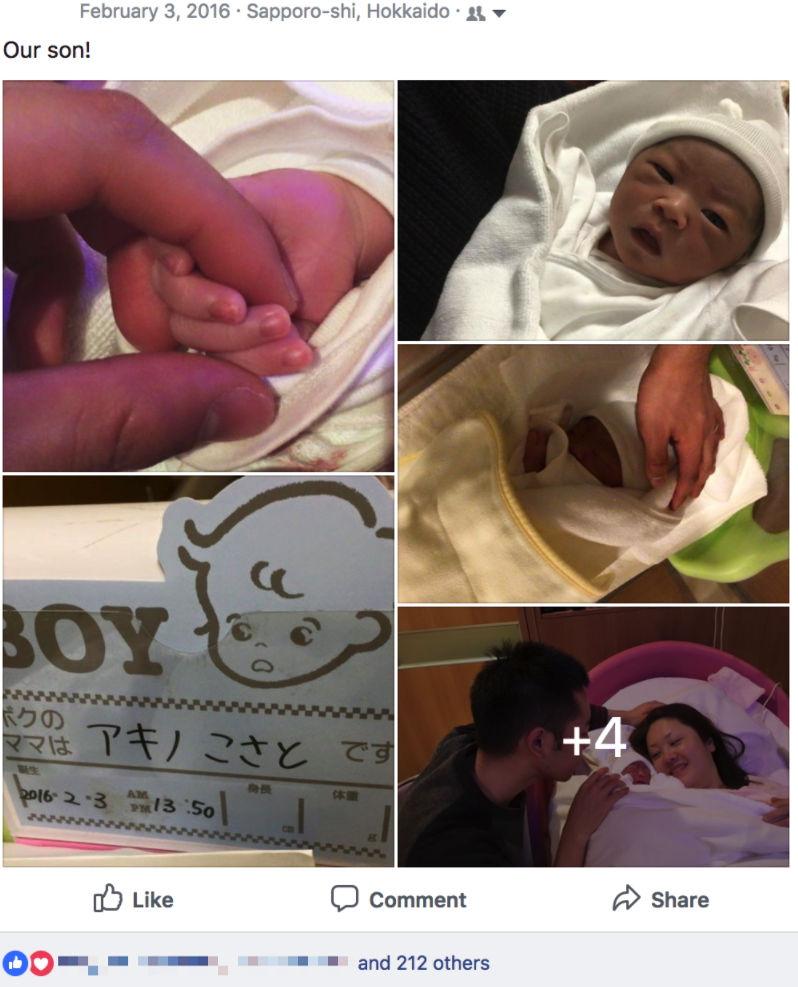
2017 February
Keimei turned one!
The first year of being parents naturally had a tremendous impact on us. It’s one of those experiences in life that you can’t really prepare for no matter how much you try — you just have to experience it to know. No amount of words can even begin to describe how much happiness and joy our little one has brought into our lives.
I made a promise on my son’s first birthday that I would do everything within my human capacity to provide the best possible life for our family, that I would be a father and husband they could say they’re proud of, and that I would forever continue to fight for our dreams. In order to accomplish that, I needed to act.
No more waiting around. It was time to get shit done. Twenty-seventeen was year of the hustle.
By this time, my web development skills and learning were well honed-in and exclusively focused on WordPress and I definitively knew this was the route I wanted to take and that the future of my career would be with WordPress.
But why WordPress? What was so special about WordPress that I had suddenly developed such a passion for it?
Well for me, I’m a big believer in purpose.
I believe there should be meaning behind the work we do, the decisions we act on, the products we use, and even the connections we make with other people.
Democratize publishing
That is the mission of WordPress. WordPress believes in empowerment, the means to express yourself freely, and the idea of sharing & building upon ideas. And on top of such a noble cause, there’s an entire global community to back it up.
And for me, that’s what makes WordPress so great.
People don’t buy what you do; they buy why you do it. And what you do simply proves what you believe.
Simon Sinek
It’s very clear after looking into the history of WordPress and the ambitions of one of its founders, Matt Mullenweg (CEO, Automattic Inc.), that its broad vision is to essentially make the web a better place, both through its open source community and Automattic products such as WordPress.com, WordPress.com VIP, WooCommerce, Jetpack, and more.
So when thinking about what I really wanted out of a career, I realized that there’s nothing that would be more fulfilling than to be a part of and contribute to this movement, a movement whose goal is to have an impact on the world, and that’s exactly what WordPress has set out to accomplish. Many of the values and beliefs of the WordPress brand aligned so well with my own that I knew almost instantly that this is the road for me.
I started to research more about Automattic and the open positions that were available.
It’s kind of funny when I look back at the very beginning of my web development journey, I created a blog on WordPress.com to document everything I learned about and coded. Little did I know that the very software and service I was using would ultimately become part of my destined career.
UPDATE: And before using WordPress.com, I was using Tumblr for the longest time, which if you haven’t heard by now, was acquired by Automattic.
Out of all the wrangler, engineer, director, and designer positions, there were a few that really resonated with my interests (design in particular), but at the time only one seemed to really match my current skills.


After shuffling back and forth reading through some #a8cday posts provided by the above link and the job description page, I was met with this clever little flip-around message 😀
Happiness Engineer? It does have a nice ring to it. Well then …
This was a meticulously crafted four-page list of all the goals, tasks, courses, projects, & events I planned for the year that were exclusively focused on getting a job with Automattic. I posted this on my living room wall where it stayed for the remainder of the year to remind me of what I set out to do. I had estimated dates of when everything needed to get done. I even set an estimated date of Spring 2018 as the time I’d be a Happiness Engineer (um, who am I to decide when I’ll be working for who, right?). Yes, I was not messing around. SPOILER ALERT I ended up getting the job with a start date in Spring 2018!
But before we jump to the juicy end, read on to find out what happened in between…
10
Democratize Publishing Part Deux
I started out by first switching over my focus from self-hosted WordPress development to building and using sites with WordPress.com. Since I was initially coming from a self-hosted WordPress background, having the flexibility to customize a site as much as possible was an important point for me. So I decided to invest in a WordPress.com Premium plan to get set up with domain mapping, get access to their premium themes, as well as have access to CSS editing.
I also needed to get comfortable with the dashboard interface that WP.com uses — Calypso. Going from WP-Admin to Calypso wasn’t such a big transition as I thought it would be, but there are some notable differences between the two that may take some extra adjusting for others.
My first project was to setup my personal site while exploring as many features as possible with WordPress.com. In the meantime, I decided I would also start volunteering in the WordPress.com public support forums. It’s been said to be a good starting place for getting practice with resolving issues and problems current users have with WordPress.com.

My first reply in the forums was followed up by a veteran member of the WordPress.com community… (nbd)

Advice for new volunteers, please kindly read:
- Best Practices & Community Standards: https://en.forums.wordpress.com/topic/best-practices-community-standards?replies=1
- WordPress.com Volunteers: https://en.support.wordpress.com/wordpress-com-volunteers/
- Getting Help in the Forums: https://en.support.wordpress.com/getting-help-in-the-forums/
Read those before diving in and you’ll be gold 🙂
I continued to contribute in the forums every day whenever I had a chance. I’d hop on in the mornings before work, sometimes during my breaks while at work, and then again in the evenings. I learned so much about the fundamentals of WordPress.com just from helping others in the forums, and it felt good to know whenever I’d get responses like these from the people I helped:
“THANK YOU!!! Perfect – all set up now!“
“It worked perfectly and wonderfully! My warmest thanks“
“Thanks again for the info, much appreciated!“
“You have helped me in more ways than one. Thank you!“
“Thanks for the very informative response! Answered my question 100%… 🙂“
“That was so helpful…thank you!“
“Your help is so appreciated! 🙂“
“Excellent. It worked. Thank you for your assistance.“
“The code worked! Thank you very much.“
If you’re wondering by now if I had applied yet, well, I hadn’t. There were a couple reasons why.
First, I’m the type of person who goes all out whenever I have my sights on a goal. In this case, I was applying for a position in a field that I had very little experience in. All my technical knowledge of IT, programming, and web development up until this point were self-taught, so I felt that when applying I needed to have an extra edge to stand out.
My knowledge of the Japanese language & its culture, as well as my physical location of actually living in Japan might have played an important role.
In the following interview with Japanese web site, SV100, Matt Mullenweg talks about WordPress and the kind of presence he wants his company to have in Japan.
For me, when I think about the future of our business in Japan, I’d really love to grow — [aside] so Naoko has more colleagues there — right now we have only one or two people in Japan. I’d love to have 10 or 20. The reason I want 10 or 20 people in Japan is because then they will be able to truly understand and create something tailored to the Japanese market better than I could in a whole lifetime — or any people not from Japan. So I do truly believe in that to really localize a service, you need the people who are embedded in the culture every day to be able to tailor it.
Matt Mullenweg, Automattic CEO
*this interview was published when?*
April 2016??
*looks at Automattic employee map to see if there’s still 2 people in Japan.*
yup, still 2.
*Matt wants how many people in Japan?*
10 or 20??
Me after seeing the map and watching the interview.
It was time to start networking! I looked to see if there were any upcoming WordCamps in Japan on WordCamp Central.
Low and behold there were!
These were perfect opportunities to meet people in the industry and to learn about what the Japanese WordPress community is like. I was really excited to find out since I had never been to a WordCamp before. I’ve only read (HeroPress) and seen (WordPress.tv) so many good things 🙂
I won’t talk too much about my experiences that I had at both WordCamps since I already wrote separate blog posts for those. I welcome you to check them out if interested.
WordCamp Kyoto 2017: connect to_
connect to_ Events where people of different backgrounds and cultures can come together under a common interest and feel a genuine connection is to say the least—inspiring. The Japanese character, 縁 (えん), pronounced as “en”, was the theme of this event. The character has many meanings but in the context of this event, it took…
WordCamp Tokyo 2017: Join
Join Theme of the year goes to bringing people together. Twenty-seventeen has certainly been a year of tremendous personal growth, learning, and connection in regards to WordPress. Earlier this year I had the opportunity to attend WordCamp Kyoto, the first of only two WordCamps held in Japan this year. And just this past weekend, I…
After writing up my post on WordCamp Tokyo, I decided it was time to finally apply!
11
Welcome TO The Chaos
I submitted my application on October 3rd, and every day from that day on was spent refreshing my inbox. I read from past experiences of other prospective applicants that the wait sometimes lasted months!
Fortunately, I did not have to wait that long, as I received a reply back almost exactly two weeks later. I don’t remember having felt this excited about receiving word back from a prospective employer since maybe years back when I was applying for jobs in Japan.
I’m not sure if anything has changed since then, but it seems that Matt does a first pass on all applications & resumes that come in.
The unusual process starts from the get-go: the CEO does the grunt work. Mullenweg screens all applicants, spending one-quarter to one-third of his time on hiring. That way, when a hiring manager gets a resume, it comes from Mullenweg, and the person is already pre-approved by the CEO.
Business Insider, Billion-dollar startup Automattic hires employees without ever meeting them or talking to them on the phone
The thought that maybe my resume was looked at and directly approved by Matt first is pretty cool!
I received an assignment that I had to complete before actually doing my first interview. It wasn’t overly difficult, and in fact, it was quite straightforward. I could get a sense that the goal was to test if you could follow instructions, in addition to doing a little bit of out-of-the-box thinking.
Sent my project in, and about a week later I got word from Automattic letting me know that they’d like to set up a date to have a chat, which ended up being my first interview.
I wasn’t sure what to expect (but I kind of did). The only impressions I had of what the interview might be like was only from what I read of other past applicants, and those posts were quite dated, so I expected pretty much anything could happen.
The interview lasted about an hour which took place over Slack, and was done completely in chat. I was admittedly nervous going into the interview at first — as previously mentioned it had been literally years that I had a proper job interview. But once the chat got going I started to feel a bit more comfortable. The chat went rather smoothly and there weren’t any questions I felt that I couldn’t handle. It eventually ended on a positive note, and I was given yet another assignment.
This time the assignment was a bit more technically-involved, but again nothing too demanding. I spent some extra time looking everything over before I sent it in.
A little bit over a week later I got word from Automattic asking if I was available for another chat i.e. my second interview.
At this point, I had passed a resume screening, an assigned project, a first interview, another assigned project, and now I was moving on to a second interview. I knew I had to step up my game.
I won’t get into too much detail about this particular segment, but I can say I was mostly interviewed on my knowledge/thoughts about support in general. Unlike the first interview, this one took about an hour and a half. I was so relieved once it was over, but at the same time anxious as to when I’d hear back next.
Then, a few days later, I received an email. Automattic notified me that they would like to advance me to the next stage — the trial.
Naturally, the first person I told was my wife. She knew how anxious I was waiting to hear back and when I told her about the news, we were both excited and happy to finally know I’d be moving forward!
The Trial
Intense. Tough. Grueling. Overwhelming. Demanding. Exhausting.
*what else, um…* NOT EASY.
One might describe the trial all of the above +more. I already knew this was not going to be a cakewalk on any level, and I think the most challenging thing for me during this entire ordeal was to keep my head on straight.
Since I was obviously going to be under evaluation, every day there was a constant stress and tension of being ended.
As with anything, both quality and quantity are important factors for producing excellent work, but what Automattic is really looking for in addition to those two points is genuine passion in the work. They are also looking at what kind of value and impact we bring to the table for each and every interaction we produce for both the users and the company.
“We care about the work you produce, not the hours you put in.” — Automattic
My days were long and tiring, but what kept me going every day was the thought of a brighter future for me and family, and that this trial would only be temporary.
My Daily Schedule (for nearly a month)
6am – Wake Up + Get ready for work + eat breakfast
7am – Leave house + drop my kiddo off at daycare + catch the train to work
8am – Start work
5pm – End work + pick up the kiddo from daycare
6pm – Have dinner + give the kiddo a bath + take my own shower
7pm – 1 hour rest (maybe)
8pm – Trial Work
11pm – Finish Trial Work + Follow up on tickets + follow up studying + P2 work
12 or 1am – Sleep
I was doing my trial on top of already having a full-time job as a teacher and parenting (which by the way is another trial in itself).

Enabled a two-factor authentication security system on the office. I had one too many security breaches from the little 2yr-old humanoid running around.
I was lucky to have a strong support system from many people.
My wife especially was super understanding of what I was going through and helped me out in any way she could. I wouldn’t have been able to get through this time without her.
I was also unexpectedly pinged by different HEs (Happiness Engineers) who were messaging me to offer their support and best wishes before my trial even started. This was definitely one of my first surprises of my trial experience, but very welcoming surprises. Likewise, I did a lot of pinging myself as the weeks went on, asking different HEs for advice on troubleshooting or feedback.
Never was I met with a straight ‘no’ or ‘can’t help you’ vibe. In fact, it was quite the opposite such that everyone was actually happy to help! The mindset is truly different here when compared to other workplaces I’ve experienced, and this is something I love about Automattic’s culture and a large part of what drives that culture comes from the company’s creed.
I will never stop learning. I won’t just work on things that are assigned to me. I know there’s no such thing as a status quo. I will build our business sustainably through passionate and loyal customers. I will never pass up an opportunity to help out a colleague, and I’ll remember the days before I knew everything. I am more motivated by impact than money, and I know that Open Source is one of the most powerful ideas of our generation. I will communicate as much as possible, because it’s the oxygen of a distributed company. I am in a marathon, not a sprint, and no matter how far away the goal is, the only way to get there is by putting one foot in front of another every day. Given time, there is no problem that’s insurmountable.
In support specifically, I learned that everyone is dealing with a constant incoming of user issues and problems. The ability to ask for help at any given point throughout a chat, ticket, or any interaction was another thing that significantly impacted my experience with learning and growing throughout the trial. The fact that asking for help is actually encouraged is something I respect. The systems put in place for asking for help was also a new and innovative area I had never experienced before i.e @mentioning, using “call words”, or posting requests on P2s.
Everyone benefits from learning and teaching others.
In regards to making constant progression and moving towards a goal, I knew how important it was to receive critical feedback and act on it. I was lucky to have two great individuals guide me through this process — my trial lead and trial buddy — who both let me know exactly what I needed to focus on and improve. Their feedback had always been actionable and I can say I was able to grow from it. Another part of this process that I really appreciated was the fact that I also had the freedom to identify on my own what I needed to work on.
One thing that I quickly learned about Automattic is that the lifeblood of the entire company is communication — communication is oxygen as the saying goes. I learned and grew to love how conversations, and open communication with anyone for that matter, was only a ping away. I had not once encountered someone who was unwilling to help or inconvenienced to chat. At first it was strange to see how anyone would be so willing to chat with a newcomer, but slowly I realized this is the culture of Automattic, and so I was happy to interact and learn from everyone.
Learning in a dynamic environment was another takeaway from my experience. I’m sure almost all trials and those who already went through the trial could agree, but this was by far the most I had ever learned in such a short amount of time.
Every day there was something new to be learned. Never was there a day or moment where I could say I knew enough. There was always knowledge to be gained, and from so many sources.
Documentation. P2s. Slack conversations. User tickets. Chats. All of these sources combined was a trove of information, and what I learned throughout the weeks was how to investigate all these different avenues for the answers I needed.
Lastly, I have to mention my trial mates. Of the original group, nearly half of us made it through. It was certainly a hit to the heart, as well as a proper wakeup call every time we saw someone go. We were our own team in a way. We looked out for each other, shared encouraging words when times got tough, and even though not all of us were as active as others in our trial group, I felt we all ended up coming out together as a team, and that’s something I’ll always remember from my trial.
Anyways, it seems like I’m already skipping ahead here so I might as well wrap it up XD
It was five days before Christmas and I couldn’t be anymore anxious as to when this trial was going to end. I remember thinking to myself that this would probably be the worst holiday season ever if I didn’t make it at this point.
*ping*
And there it was — my trial lead with a new assignment for me and a request for a chat.
I finished up my assignment, and anxiously awaited for our scheduled chat which wasn’t until the next evening. By now, I had made peace with myself that whatever the outcome, I would reassure myself that I had done everything within the best of my abilities throughout this trial. There was always next time should it have been decided that I would not move forward. I just went into it ready to expect anything.
The chat started off just like any other and lasted about an hour. And so to not get into any specifics, as you can probably guess, it ended on a happy note.
I was being recommended to join Automattic as a full-time Happiness Engineer!
It was nearly 12am by that time and I still had work the next morning, but I couldn’t sleep at all because I was just way too psyched. The next evening we celebrated with pizza & a much needed craft beer 🙂
I was employee #698 at the time! As far as company employee history in Japan is concerned, Naoko was the first. The second was a mobile developer. The third was the first native Japanese Happiness Engineer. And I was the fourth 🙂
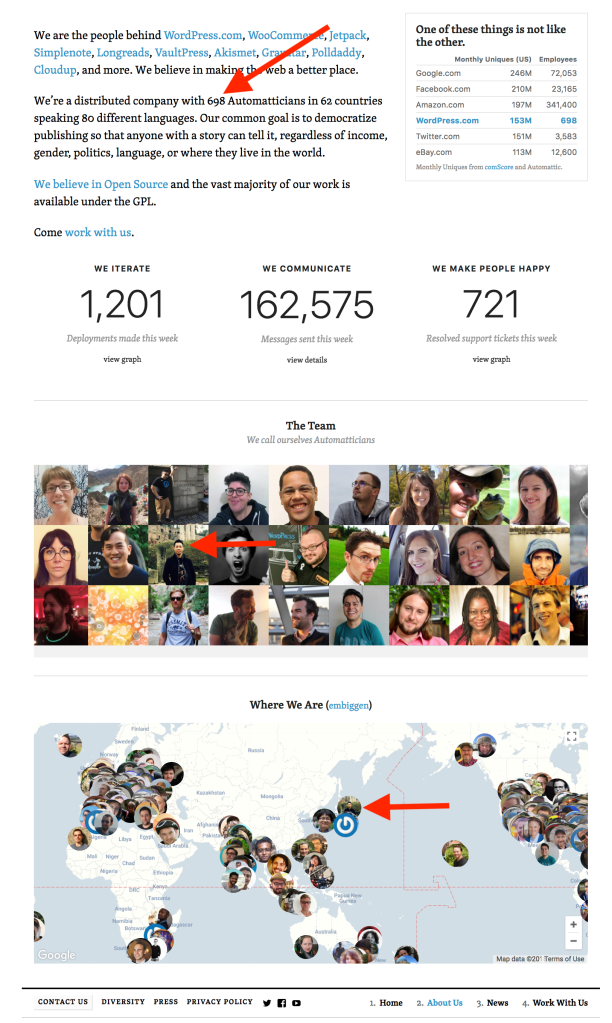
NET (Native English Teacher) Timeline (3yrs 7mos)
2014 July
28 – Submit Resume via Job Subscription Service (Hokkaido Insider)
30 – Meeting with Principal + Offer
2014 August 18
First day as an NET at a private high school
2018 March 20
Last day of my English teaching career
Happiness Engineer Timeline
2017 October
03 – Submit Application (Resume Screening)
18 – First Assignment
2017 November
04 – 1st Interview
05 – 2nd Assignment
13 – 2nd Interview
15 – Trial Offer
27 – Trial Start
2017 December 21
Trial End
2018 January 02
HR Chat + Offer Letter
2018 March 21
First Official Day at Automattic!
If you made it this far, thank you for reading!
And finally, it might be worth mentioning that Automattic is hiring 🙂


















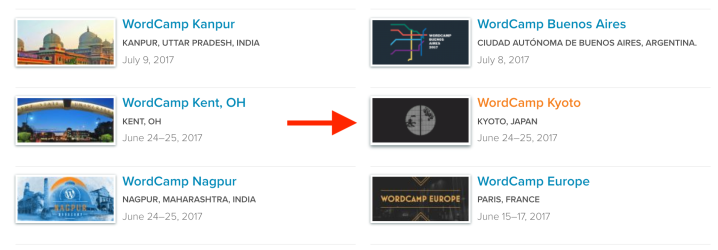


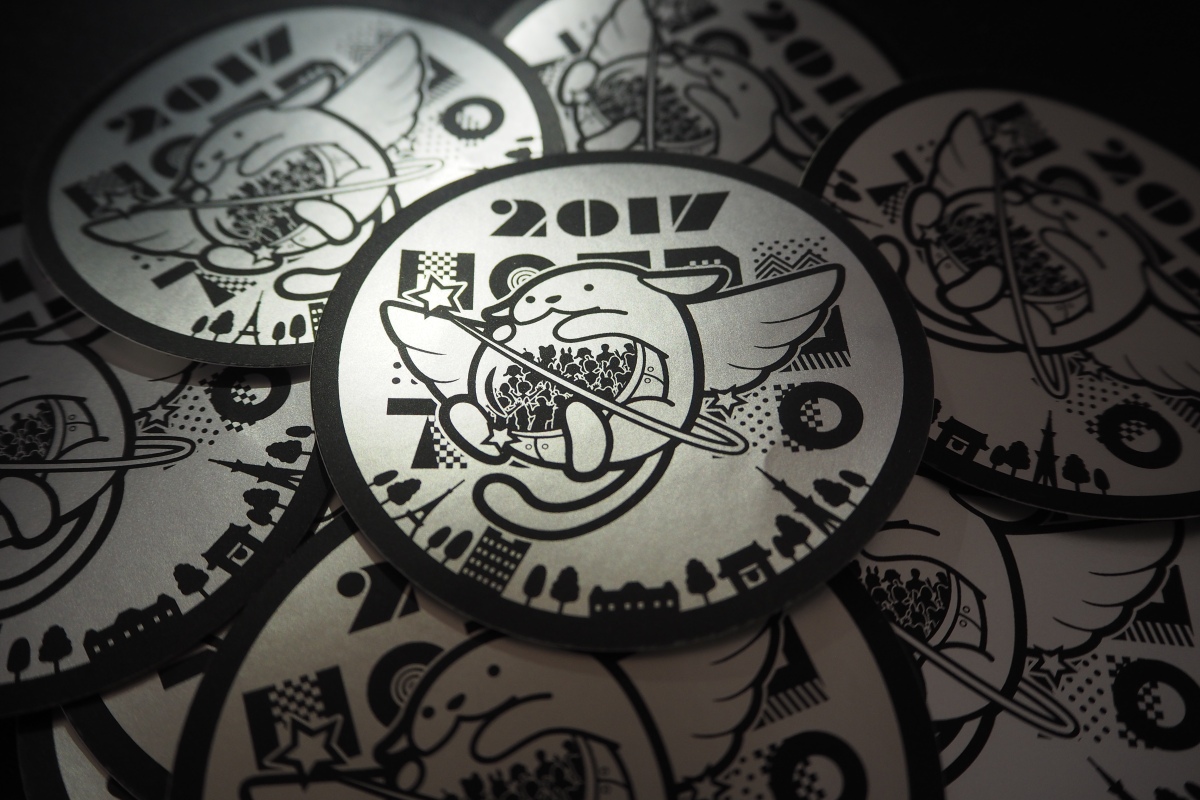


Leave a reply to Paulo Cancel reply